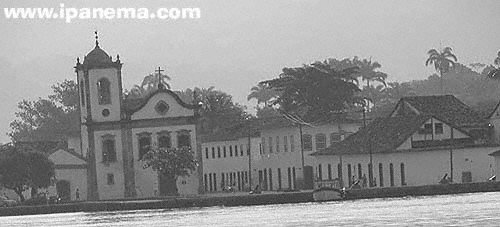

| Home » Pictours Off-Rio » Paraty & Trindade » A Brief History of the City |
 |
Before Portuguese colonials, Guaianá Indians were the first to populate the region of Paraty. The name of the city itself comes from an Indian word, parati is a fish of the mullet family. The serene waters of the bay were safe for Indian boats. Rivers and streams surrounded by lush vegetation were perfect for fishing and hunting, providing fresh water, fruit, and firewood.
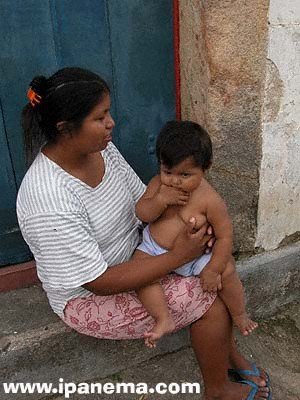 Being
nomads, the Guaianá Indians opened many trails. A few of them
were long enough to go past the Serra do Mar mountain range. The
origin of Paraty is associated to one of these trails. On the XVI
century it was connected to a longer road that led all the way to
São Paulo. From there travelers could use the Paraty Bay as a
port, and then go by sea to Rio de
Janeiro.
Being
nomads, the Guaianá Indians opened many trails. A few of them
were long enough to go past the Serra do Mar mountain range. The
origin of Paraty is associated to one of these trails. On the XVI
century it was connected to a longer road that led all the way to
São Paulo. From there travelers could use the Paraty Bay as a
port, and then go by sea to Rio de
Janeiro.
Historians do not agree about the date Paraty was founded, but there are reports of a small village in what is today the Morro do Forte since 1560. Around 1646 the village was transferred to the area between rivers Perequê-Açu and Patitiba, where the historical center is located. The land was donated by Dona Maria Jacome de Mello under the condition that a new chapel be built in the honor of Nossa Senhora dos Remédios.
Paraty was still a small village when it seceded from Angra dos Reis in the 1660's. By the end of the VXII century gold and diamonds were found in Minas Gerais, a State that is not bathed by the sea. The Indian trails were then used to enter the sertão (Brazilian countryside). Paraty became the last stop of what would be known as the Caminho do Ouro, or the Gold Trail.
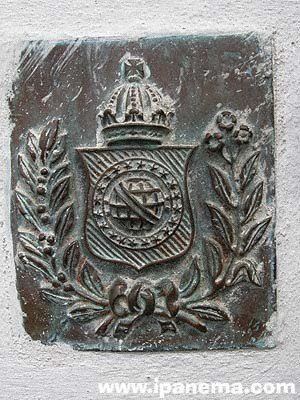 To
keep better control of gems and precious metals, Portuguese
authorities would not allow the opening of alternative trails.
Paraty was privileged as a mandatory stop for anyone going from Rio
de Janeiro to the gold mines or back.
To
keep better control of gems and precious metals, Portuguese
authorities would not allow the opening of alternative trails.
Paraty was privileged as a mandatory stop for anyone going from Rio
de Janeiro to the gold mines or back.
During the Gold Cycle important structures were built. The pier, the churches of Santa Rita, Nossa Senhora do Rosário e São Benedito, and the church of Nossa Senhora de Conceição in Paraty-Mirim date back to this period.
The population grew. With the increasing prices of produce, farming became a lucrative business. The production of sugar and cachaça were very important to Paraty. By the end of the XVIII century these goods were highly valued in the international market. The town had as many as 250 sugar farms and distilleries. The quality of the local cachaça became recognized worldwide. For a long time the word paraty was used as a synonym to cachaça.
From 1830 onwards coffee gained importance, it was the era of the Coffee Barons. They accumulated a great wealth, and lived in great luxury around the valley of the Paraiba River. The heavy farm work was performed by African slaves. Paraty was the closest port, and it experienced a second important growth. Igreja de Nossa Senhora das Dores was built during this era.
 In
the second half of the XIX century a new railway connected São
Paulo to Rio de Janeiro. Paraty
lost its importance as a shipping port. When slavery was abolished
in 1888, the town went into a fast decline.
In
the second half of the XIX century a new railway connected São
Paulo to Rio de Janeiro. Paraty
lost its importance as a shipping port. When slavery was abolished
in 1888, the town went into a fast decline.
The population that had reached 16,000 by the end of the XIX century was reduced to a mere 600 hundred by 1951. Away from main roads and railways, Paraty was almost forgotten, literally frozen in time.
In 1966 the town was declared part of the Brazilian Historical Heritage. With the opening of Rio-Santos road in the 1970's, Paraty was once again connected to the rest of the country. It started to attract visitors from all over Brazil and the world. Now is Paraty's third golden era. The town offers a unique opportunity of associating historical attractions to the crystal blue sea, and hundreds of islands and beaches.
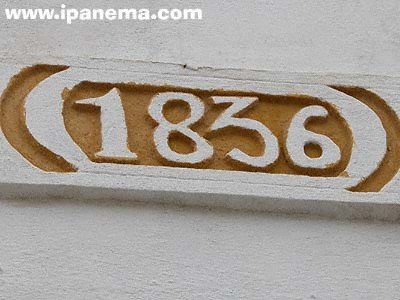 |
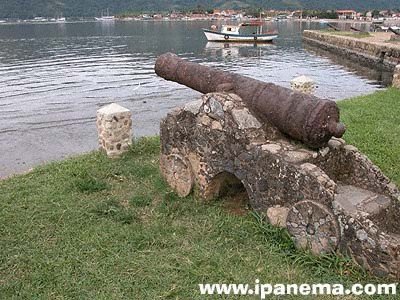 |
 |
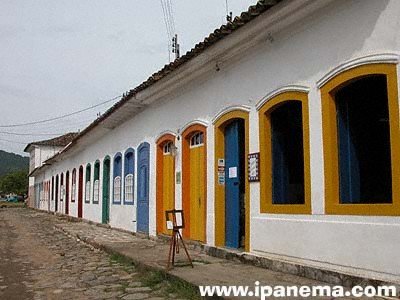 |
 |
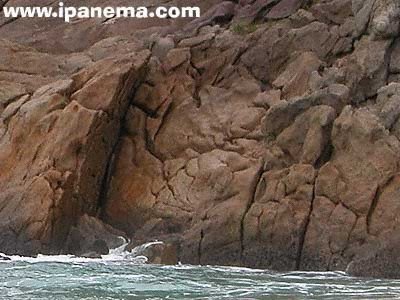 |
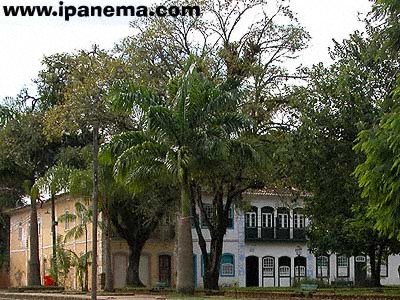 |
 |
 |
 |
